Defence Projects
Dynamical Testing Solution (Rocket Test Bed)
-
ifp develops a hard- und software based dynamical testing solution for diagnostic inspections
and acceptance of complex systems, particularly with regard to rockets (rockets test beds).
Technical systems such as mechanical engineering, vehicle construction and plant engineering become more and more efficient but also more sophisticated due to closer combinations of software based control, mechanics, pneumatic and electrical systems.
Therefore solutions for fast and efficient diagnostics of such systems become more and more important. However for an individual testing of proprietary systems with particular testing requirements no state-of-the art solutions exist allowing a dynamical, event-driven automatic testing satisfying also the needs for reporting documentation and auditing acceptability.
Against this background the ambition of this project is to investigate and provide a testing technology for the dynamical measuring of non-linear, hight sensitiv systems together with the primary ambition to develop a rocket testing device.
However the scope of application of this solution goes far beyond this direct product purpose so that a commercial usage of the results of this project for the fields of hydraulics, electrical drives and other complex mechatronic systems is planned in the near future.
We seek to achieve the following characteristics with the testing solution to be developed:- Maximum precision measuring but at the same moment with a minimum of interaction with the equipment under test by the electrical test current (e.g. no significant capacitive induction of the equipment under test by the electrical test current).
- Measurement of the dynamical system performance instead of simple static characteristics.
- High-resoluting timing together with the measurement of transit times of electromagnetic stimuli.
- Real time capability time slices in the range of milliseconds.
- Automatic testing following programmable test sequences with event driven test procedures (state based tests) and coordinated multithreaded sequences.
We also seek to achieve an on board diagnostic capability for the system, to detect and compensate system immanent characteristics periodically and also consider and compensate the aging of the testing device (test equipment monitoring).
Cable Break Failure Simulation System
-
ifp develops a hard- and software based solution
to simulate cable breaks within the cabling of a rocket launcher. The system supports the training of the
maintenance staff of the launcher.
Suitable AS Interface clients placed at dedicated places on the launcher will break the cables.
The bus used is the AS Bus. At this standard industrial field bus the data transfer from the clients
to the AS master as well as the supplied power
is carried out on a 2 wired cable.

Airbus Defence & Space
New PC 104 Stack for a Launcher Control Unit
-
-
ifp reassembles the PC 104 stack for a launcher control unit using up to date components.
This customer specifc PC104+ solution developed by ifp still consists out of
- one PC104+ CPU board (PCI)
- one serial RS422 board (PCI)
- one ethernet board (PCI)
-
one CAN board (PCI) having 2 CAN channels. This CAN board supports the CANopen protocol.
- can be operated within the extended temperature range from -40 up to +85 °C. Every component used covers this temperature range.
- is designed and tested to be shakeproof.
-
has a specifically developed and manufactured 3D heatsink composed of black anodized aluminium
and a motherbord with a connector to the base board of the entire application.
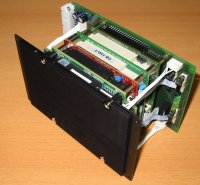
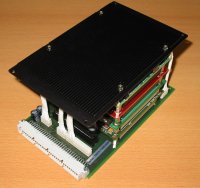
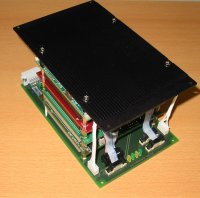
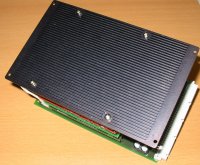

Krauss-Maffei-Wegmann
Remote Control of Rocket Simulator
-
ifp improved the rocket simulator
by adding a remote control feature. Ammunition types, failures etc. can now be set remotely.
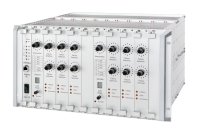

Airbus Defence & Space

Krauss-Maffei Wegmann
GPS Storage and Power Control Box
-
ifp develops an
electronic device for the safe storage und distribution of a GPS software key.
This GSPC Box has software and hardware components for the secure storage, evaluation and distribution of the key.
The key storage is based upon FPGA technique. In case of a threatening corruption the storage of the key is deleted by a
technique specified by the Bundesamt für Sicherheit in der Informationstechnik (BSI).

Airbus Defence & Space
Data Verification Device
-
ifp develops a tool to record the data traffic between a launcher control system
and the rockets. This device is used for development-, test-, and integration purposes and
improves the security during
some tests in White Sands Missile Range. It consists of the software together with the suitable hardware.
A PC connected to the
device is used to record and analyse the received data. The device is a passive listener and should never modify the data
traffic to the rockets. The launcher's aiming data are proved and the permission for launch is
signaled via a traffic light. The recorded data are stored in a SQL Server database.

Airbus Defence & Space
Development and implementation of a GPS satellite tracking algorithm
-
ifp develops an algorithm used to track the GPS satellites. This algorithm calculates
if a sufficient number of satellites will be tracked at launch time so that an individual
rocket can be launched GPS guided by the
launcher MARS/MLRS. If not enough satellites will be tracked the user is informed about that.
The algorithm ist implemented in C++.
The slant range of the rocket at launch time, the geographical position and the altitude are regarded as well.
The reference ellipsoid for the calculation is WGS 84 and the satellite's ephemeris data are used by the algorithm.
They are used
for the calculation of the satellite position by iteratively solving the Kepler Equation
(e.g. Navstar Document, Global Positioning System Standard Positioning Service Signal Specification,
2nd Edition, June 2, 1995).
Transformations between several coordinates systems (ECEF, NED, ENU) are neccessary to perform the calculations.

Airbus Defence & Space
Smart Ethernet Hub for a Rocket Simulator
-
ifp develops an intelligent and flexible ethernet hub.
This hub allows routing connections between a
tactical rocket launcher, the rockets and a rocket simulator.
 The data traffic between a control unit and the rockets or and the simulator can be traced by a monitor PC.
The route switching between the control unit and the rockets or the simulator is done by the monitor
PC using some special telegram.
The data traffic between a control unit and the rockets or and the simulator can be traced by a monitor PC.
The route switching between the control unit and the rockets or the simulator is done by the monitor
PC using some special telegram.
The monitoring application running on the PC is realised by C# .NET. The startup sequence of the rockets can be traced. The simulator mode allows dedicated failure patterns for the rockets to be projected. As communication protocol between PC und simulator or rockets TCP/IP is used.

Airbus Defence & Space
Tactical Rocket Simulator
-
ifp develops the software part for a tactical rocket simulator to simulate the rockets
carried by a rocket launcher. This simulator supports the training of the launcher operation
crew in the field. It can
simulate all launchable rocket types and can be projected by predefined failure patterns.
The base hardware is an UNC 20 development board.
manufactured by Forth Systems. The board containes an ARM7 core.
Six individual and independent UNC20 simulate the 6 rockets in a single launcher pod. 2 pods are
present in each launcher. Additional Microsoft applications using .NET
techniques serve for debug purposes and the for the simulation itself.
The configuration of the application is done via an integrated web server.
Meanwhile the simulator became extended by an intelligent ethernet hub. This hub is used to route the data traffic between the launcher control unit of the launcher on one side and the rockets and the rocket simulator on the other side. Among the weapon types supported by the simulator are- SMArt (Suchzündermunition Artillerie)
- Unitary (A high precision weapon type)
- LAR (Leichte Artillerie)
The data traffic between the control unit and the rockets or the simulator is supervised with a monitoring PC. The switching between the LCU and the rockets or the RSim is done via a self made protocol by the monitoring PC. The application on the monitoring PC is implemented using C# .NET. The switch-on sequence of the rockets can be supervised with the monitoring PC. The communication protocol between simulator and rockets or the monitoring PC is standard TCP/IP.

Krauss-Maffei-Wegmann, (Kassel)
Launcher Communication & Control System (LCCS)
-
ifp develops the highlevel software (C++) for a
launcher control system. The control system serves as interface between the
headquaters the weapon pods and the launcher
drive system. The laying is done via CAN encoders. The aiming direction is calculated
using some attitude angles and is monitored. The hardware as a PC 104 stack containes the CPU board, a
CAN board with two channels, an RS 485 board as well as a peripheral board. Since the weapon system is
able to fire off GPS guided rockets the software must be
able to manage all relevant values from the GPS receiver like Almanac, Ephemeris etc. and transfer them
on time to the missile. The communication protocol between CAN nodes and CAN master is standard CANopen.
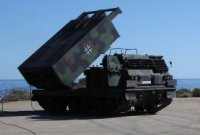 At Capo San Lorenzo on Sardegna the first successfull launch took place.
At Capo San Lorenzo on Sardegna the first successfull launch took place.
Start video as mp4 File :

Start video as mpg File :


Thales Communications
Technical Demonstrator for a Rocket Launcher
-
ifp developes the high-level software part for a guided rocket system. The software provides an
interface between
the missiles and the drive system of the launcher.
The weapon system
will be able to launch GPS guided rockets. COTS products like CANopen are used and the
implementation is performed
using C++ and CORBA. The control over the software life-cycle is carried out in accordance to MIL-Std 489.
Other companies involved are- Vickers Defense Systems
- THOMSON-CSF/ITALIA
- THOMSON-CSF COMMUNICATIONS ad
- Airbus Defence & Space

Krauss-Maffei Wegmann (Kassel)
Maintenance Tool in the Scope of a MIL Project
-
ifp develops a maintenance tool in the scope of a MIL Project. It permits the visualisation of the
maintenance steps as well as the presentation of currently occured failures in the system. The test procedure,
the texts to be displayed and the activities that must be performed are contained in a SQL Server 2000
Database. The database access is realised by means of ADO (ActiveX Data Objects). The components are realised
as ActiveX components. The IDE used is Visual Studio 6 (Visual C++ und Visual Basic). The data from the
system are delivered via MIL Bus.

Krauss-Maffei-Wegmann, (Kassel)
-
ifp reassembles the PC 104 stack for a launcher control unit using up to date components.
